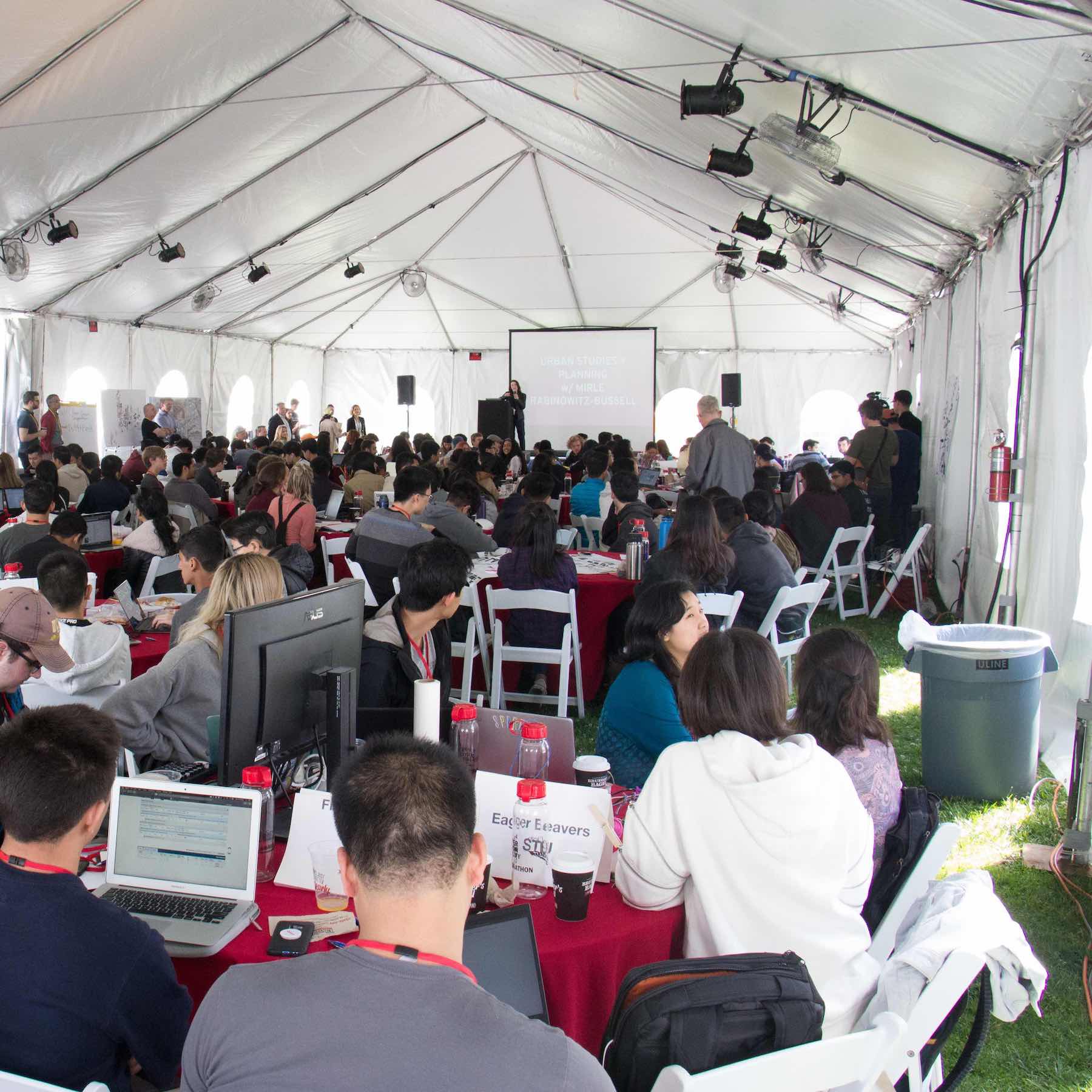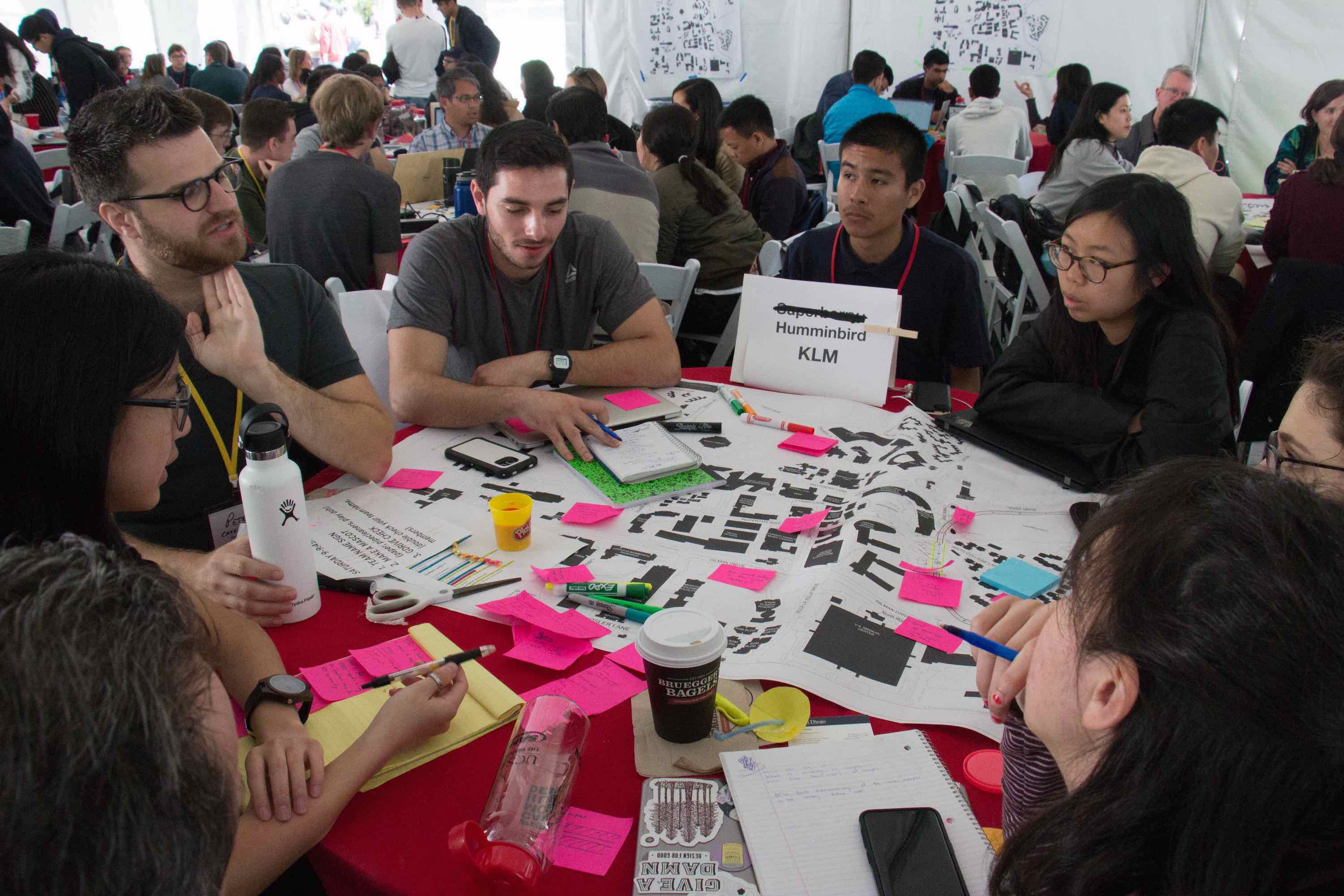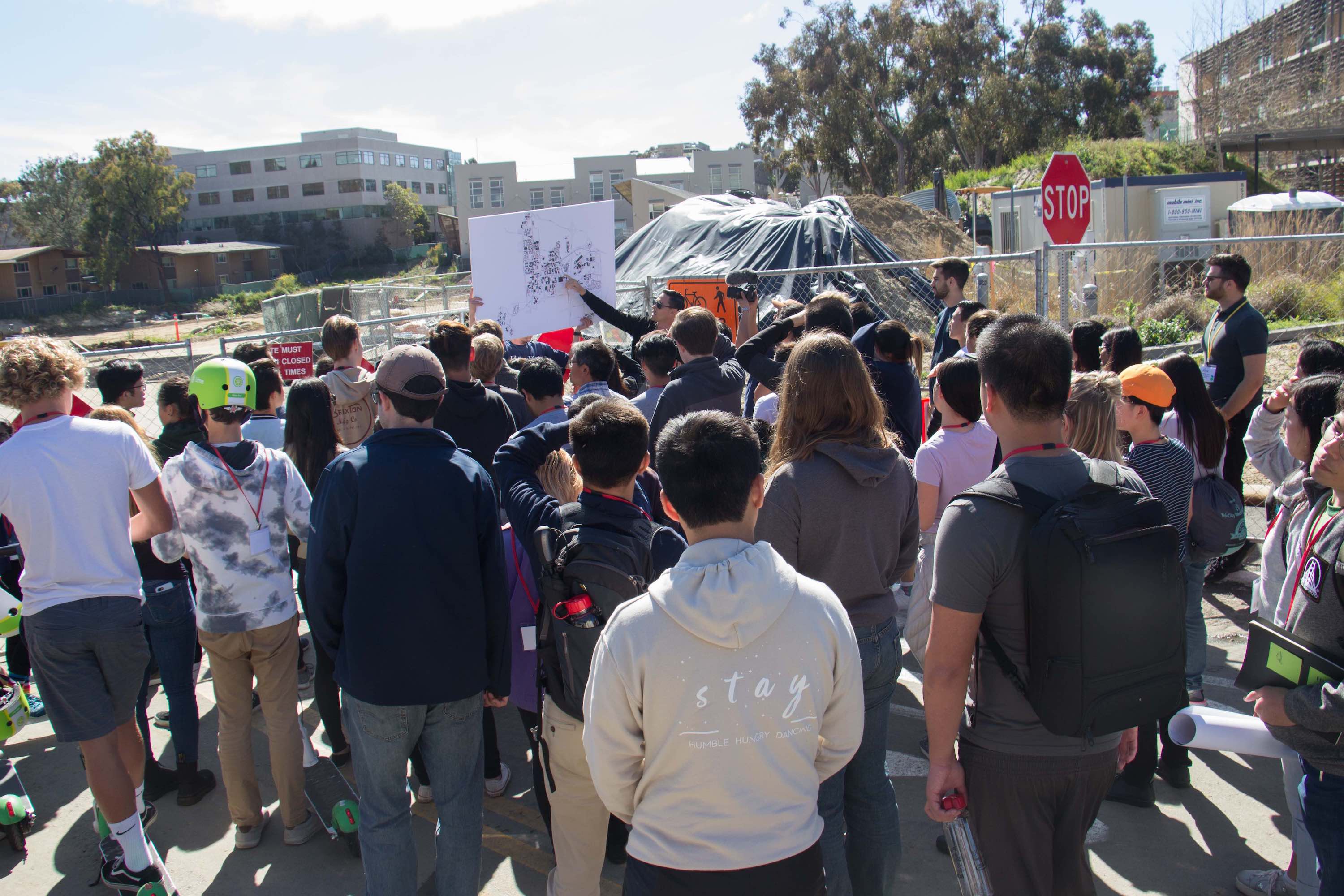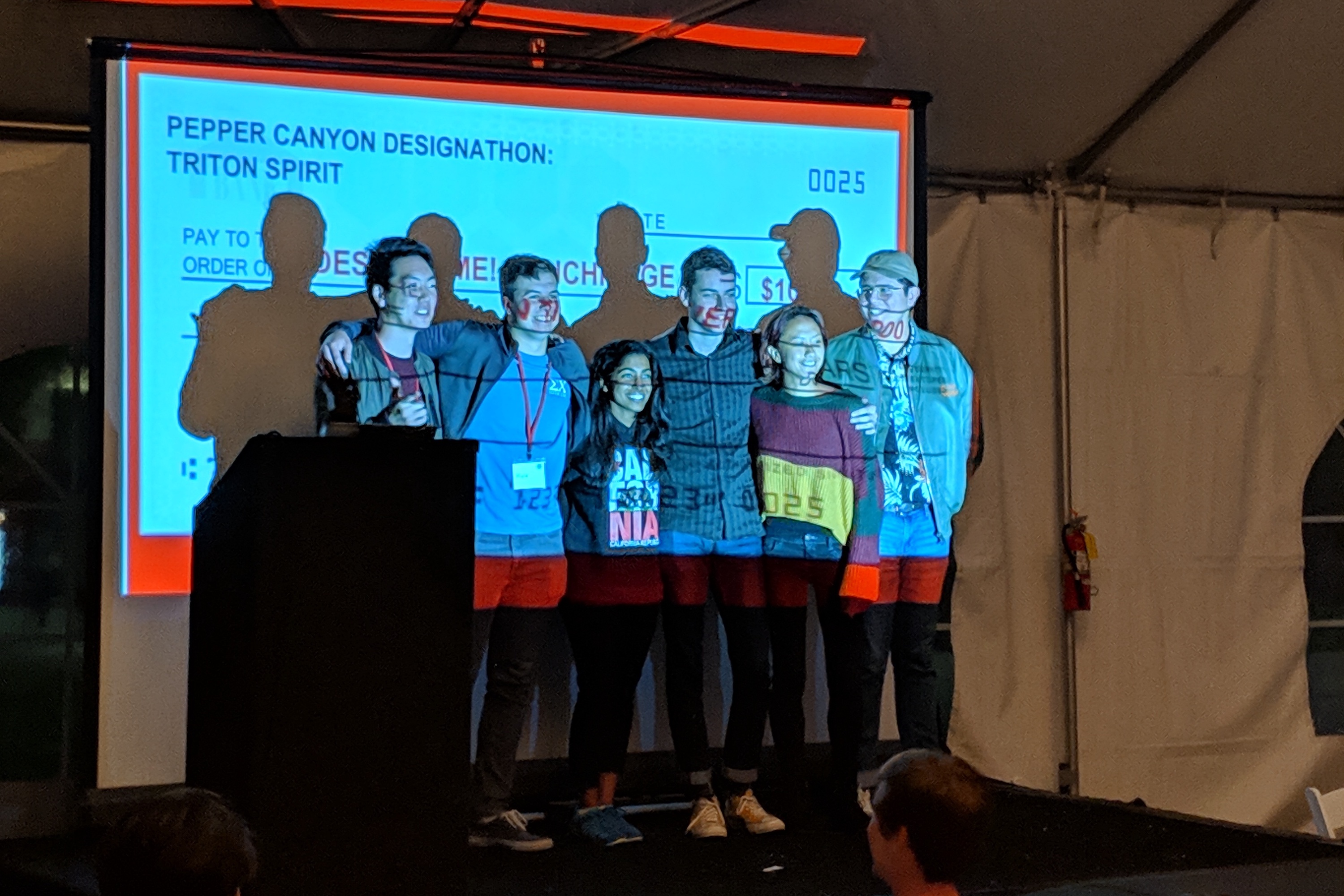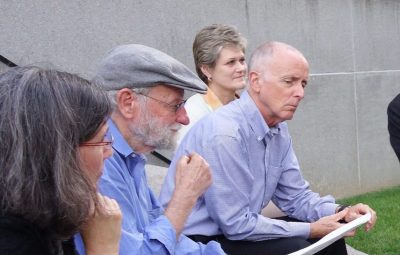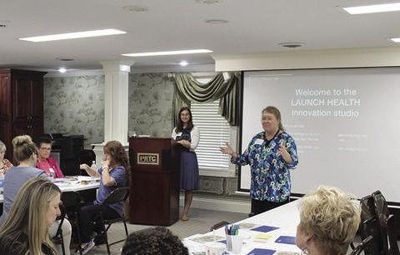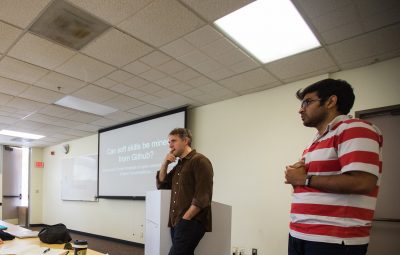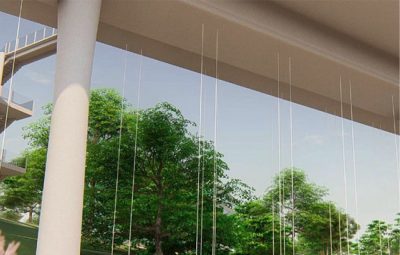Autonomous scooters, interactive art, food shuttles, and cable cars are just a few of the creative ideas that emerged from a two-day public designathon event that will join the efforts to transform UC San Diego from a closed campus primarily designed for work and school to destination, inviting people to come, stay and explore what the campus has to offer. “Anybody who comes to San Diego should have this campus as a destination in addition to Balboa Park or the Gaslamp district,” said UCSD Chancellor Pradeep Khosla in a San Diego Union Tribune article.
In 2021, the UC San Diego Pepper Canyon Mobility Hub will become a major stop on a new trolley line that will connect the La Jolla campus with other major centers of activity in San Diego. In response to the incoming station, the UC San Diego Design Lab partnered with the San Diego Association of Governments (SANDAG), UC San Diego Campus Planning office, UC San Diego’s Urban Studies and Planning’s student Young Planners’ Society, LIME scooters, and several other campus and community stakeholders to host a designathon on April 6-7, 2019. They asked teams of three to seven people to come up with ideas that would increase trolley user’s mobility and access to the campus. According to the event organizers, designathons are 24-hour challenges that invite participants to “practice human-centered design by engaging real world challenges through intensive problem finding, connecting with potential users, prototype development, and iteration.” April’s capacity event brought together more than 250 participants, including high school, undergraduate, and graduate students, community members, and faculty mentors.
With encouragement from a roster of guest speakers that included U.S. Congressman Scott Peters, Sr. Associate Vice Chancellor Robert Continetti, and council members from the cities of Carlsbad, La Mesa and San Diego, 33 teams – each with a designer, a storyteller, and an engineer – were tasked with tackling a problem and presenting a solution in one of three areas of focus: urban designs, services and programs, or data and tech solutions. Although the resulting proposals were diverse in ideas and ranged from practical solutions, such as color-coded maps and mobile apps that help visitors learn about and navigate the campus, to more imaginative suggestions, such as a glow-in-the dark skate park that would provide open space and double as an art piece, all of the projects deliberately had one theme in common: a focus on the campus and trolley users.
“We asked that teams really think about all the potential users of the hub, such as veterans coming to the hospital, people with strollers, and others who might be underserved by the current infrastructure,” said Stephanie Sherman, event lead for the Design-a-thon and a graduate student for the Design Lab, which promotes user-centered design approaches. “A lot of thought went into not only social elements, but also the urban terrain, which is really complex and impressive.”
Of the 33 ideas submitted, 10 finalists presented their ideas to the public as part of the closing day’s ceremonies, and the following five concepts were selected as winners:
Best Prototyping: Autonomous Navigational Transit System (ANTS) by team Crows Nest Engineering (Alex Branch, Owen Getz, Nyla Hekier, Robert Huffstutler, Jade Muckler, Alexis Vergnet, David West) proposed designated traffic lanes for autonomous scooter-like mobility devices that have large platform areas big enough to carry both passengers and packages and can automatically adapt to surrounding traffic conditions.
Excellent Storytelling: The Conch by team Thotty for Scotty (Ludi Duhay, Jodi Lim, Kim Luong, Lauren Ring, Sara Mei-Yuen Wang, Whitney Tsai) would create a center for culture and student activity near the trolley hub that would be a place for students to linger after classes.
Ready to Launch: UC Socially Dynamic by Team Salt & Pepper (Gregoray Boscaiu, Zijian Ding, Xiru He, Kristi Lin, Jennifer Phelps, Sophie Siemsgluess, Priyan Vaithilingam) is a project that imagines interactive art, such as light shows, a public theater and nature benches as ways to engage the campus population.
Triton Spirit: Conchierge by team Design Time! (Sophia Boss, Alvaro Mejia, Griffin Mittleman, Kyle Mumm, Sicily Panattil, John JoungSeo Kim) attempts to make navigating around campus easier for freshman students and visitors through interactive kiosks that stay updated through social media and can provide recommendations for hot spots as well as directions.
Unique Concept: Foodie App by Team Yoo (Mingxuan Fan, Kaiyun Fu, Osgood Gunawan, Jiarui Han, Yiwen Hou, Dian Yu) solves the problem of hungry commuters with no time for breakfast by combining an app for ordering food from campus eateries with a pick-up shuttle service that will have the food waiting for commuters when they get off the trolley.
The Design Lab and the Campus Transportation office are now working together to present the five winning ideas to campus leadership and other stakeholders. However, all of the projects submitted during the designathon will impact the planning for the Pepper Canyon Mobility Hub by demonstrating the utility and potential of the site from perspectives not typically obtained through traditional development channels.
“[A designathon] provides us with a more in-depth understanding than through a traditional public engagement process,” said Danielle Kochman, Associate Regional Planner for SANDAG. “The participants provide a fresh set of eyes and out-of-the-box thinking to generate new and innovative solutions.”
A majority of the designathon participants were students, and their experience as both campus and technology users is exactly the perspective that organizers need to update the vision for the transportation hub, which has been 16 years in the making. Since planning began in 2003, innovations, such as e-bikes, scooters, ride sharing, and autonomous vehicles, have dramatically changed how people get around. Events like the designathon not only help planners to adapt to these changes, but they also provide a way to involve the community in the process.
“Designathons are a wonderful way for people to learn human-centered design while also producing end products and services that can actually be implemented, all with the aid of the people for whom the work is intended to serve,” said Don Norman, Director of the UC San Diego Design Lab. “The success and popularity of these designathons encourages us to increase the number and scope of these events, partnering with other organizations to make the designathon’s emphasis on multi-disciplinary human-centered design of needed services and products a frequent and important part of UC San Diego’s activities.”
